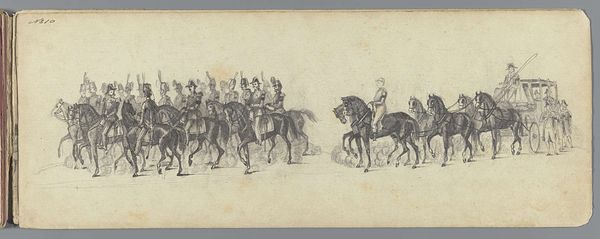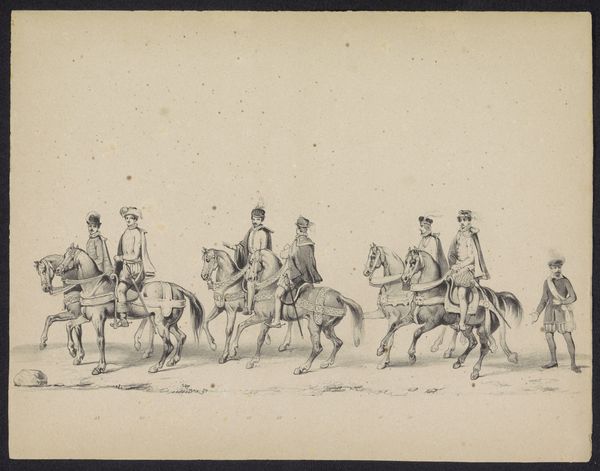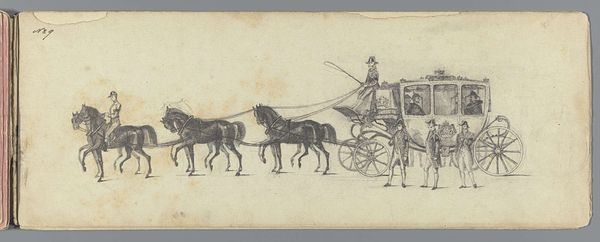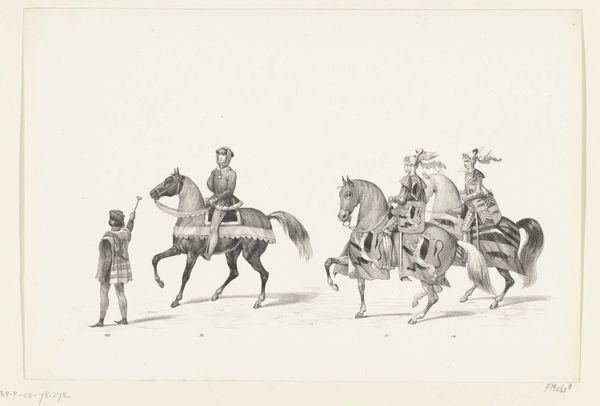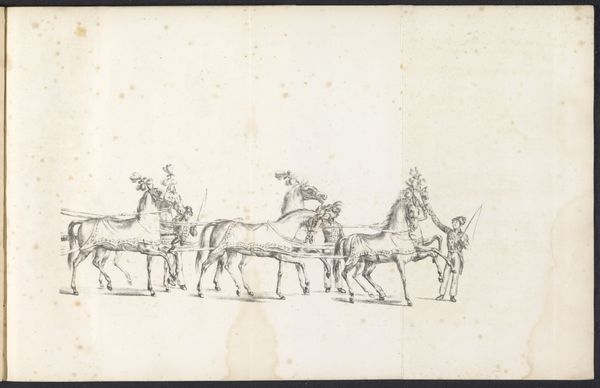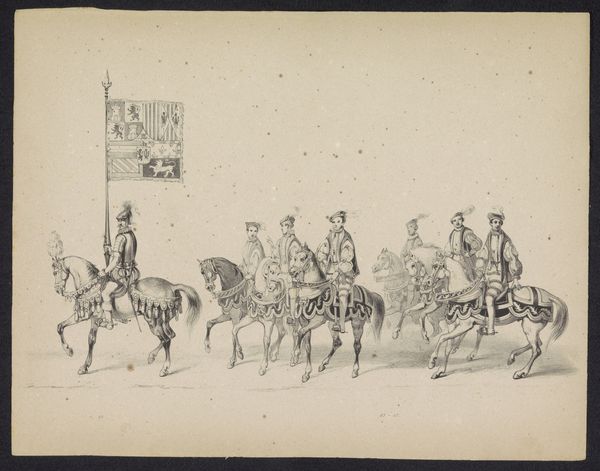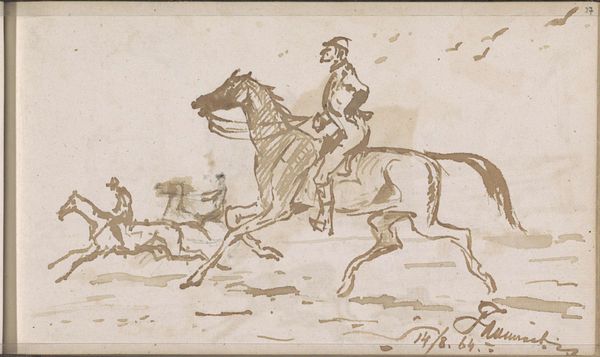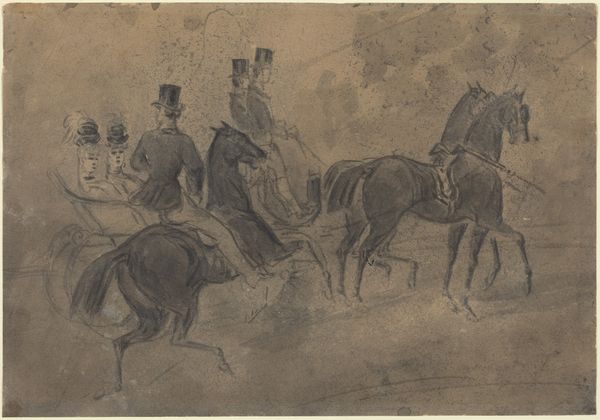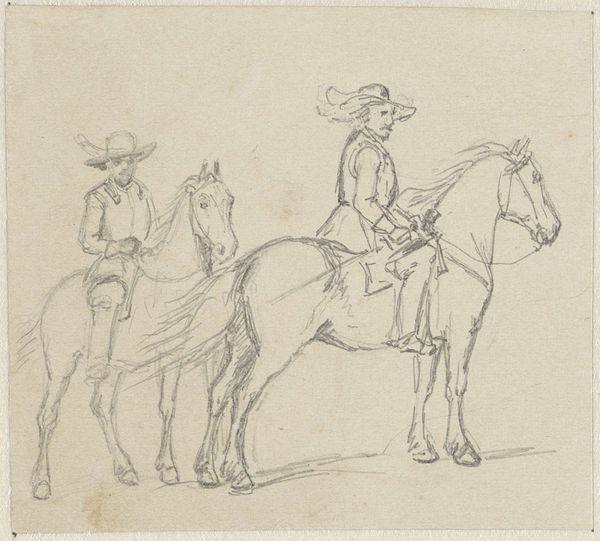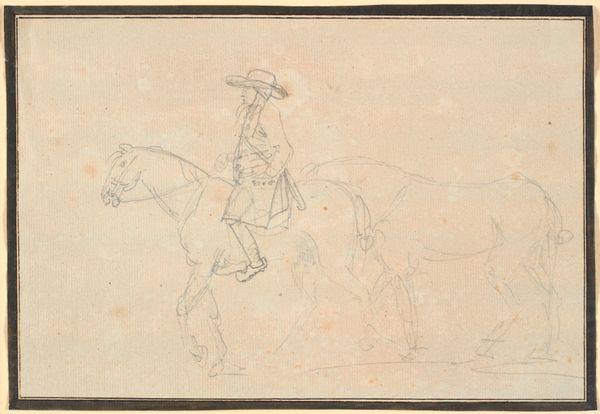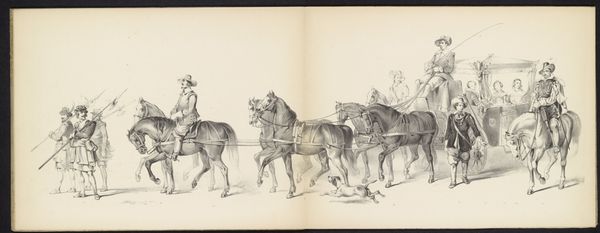
drawing, graphite
#
portrait
#
drawing
#
landscape
#
group-portraits
#
graphite
#
history-painting
#
realism
Dimensions: height 140 mm, width 365 mm
Copyright: Rijks Museum: Open Domain
Editor: This graphite drawing from 1865, titled *Begrafenisstoet van Anna Paulowna*, or *Funeral Procession of Anna Paulowna,* really captures a sense of somber occasion with its portrayal of horses and riders in procession. It is held at the Rijksmuseum. I'm struck by its simplicity of materials. What insights can you offer about this piece? Curator: Note the directness of the graphite on paper. This isn’t a polished painting designed to be hung in a palace, but rather a study, a record of an event. The means of its production, graphite – relatively cheap and readily available – points to its function as a historical document more than a precious object. Who do you imagine made it, and why? Editor: Perhaps someone commissioned to record the event for posterity, or simply an observer interested in the spectacle of the funeral. What social elements are being captured in this scene? Curator: Exactly. And consider who could afford graphite and paper, and who had the skills to use them. What labor went into producing not only the image, but the horses, the uniforms, the entire spectacle of royal mourning? Think of it as a snapshot, though laboriously made, of the material culture surrounding Anna Paulowna's death. The consumption of resources is inherent. How do you see that idea operating within this image? Editor: So, it's less about individual artistry, and more about the systems of production and consumption that made this scene, and this artwork, possible. That recontextualizes it completely for me. Curator: Precisely. It prompts us to examine the economics and labor underpinning even seemingly simple historical drawings, challenging notions of art existing in a vacuum, apart from the wider world of material conditions. Editor: That definitely changes my perspective, understanding the drawing not just as a depiction of an event, but an artifact reflecting the social and economic realities of its time. Thank you for offering that deeper perspective!
Comments
No comments
Be the first to comment and join the conversation on the ultimate creative platform.
